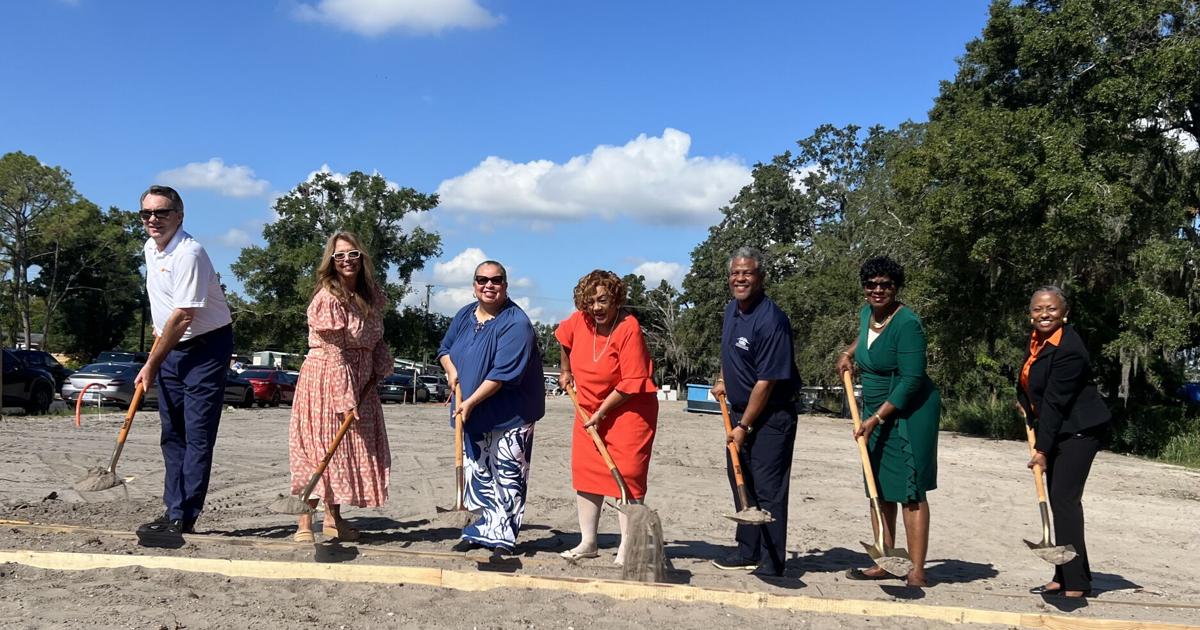TAMPA — In Tampa, a revolutionary robot will soon be laying the groundwork for a new home.
Layer by layer, concrete will be printed and form the walls of Tampa’s first 3D home, a project that could help redefine, or enhance, how affordable housing is built in the city.
Work began last week at an infill property at 4426 Lurline Circle, where a single story, 1,450-square-foot home will mark a technological milestone, according to Will Crawford.
“During the pandemic, the cost of security has really started skyrocketing, so we start looking for alternative methods that bring the cost of destruction down,” said Crawford, the Acquisitions and Special Projects manager for the Corporation to Develop Communities of Tampa.
Crawford and his team initially completed a project for homeless veterans using panelized construction (which uses prefabricated walls, floors and roofs that are built in a factory and then transported to the construction site) and have an 18-unit apartment project in the works using shipping containers.
“But then this 3D printing stuff started popping up everywhere,” Crawford said. “And I decided to take a deep dive on it and learn everything I could. I ended up telling our CEO, man, we’ve got to get one of these things.”
Crawford said CDC of Tampa had an opportunity to jump into 3D printing, as investors were interested, but elected to take its time. What he discovered in his research, which included a visit to Tallahassee to observe the construction of the state’s first 3D home in 2022 “and learn from their mistakes,” was not only was it a futuristic technology with tons of potential, but it also stood out to him for its efficiency, durability and environmental benefits.
Eventually, thanks to a half-million-dollar grant from Hillsborough County, it was able to purchase a robotic arm 3D construction machine, as opposed to the bigger gantry machine, with hopes of scaling up in the future.
The CDC of Tampa evaluated a handful of companies, including one in Russia and another in the Netherlands, before settling on a company based in Stuart, Florida.
Now, the CDC of Tampa has at least three projects in the works employing 3D printing to create the outer shell of affordable housing.
The inside of the homes is framed and built traditionally.
Upon completion, the home on Lurline Circle, a mile down the road from King High School, will be Tampa’s first 3D home, which Crawford says is just one of three in the state of Florida that he knows of that has been permitted.
And two weeks ago, the CDC of Tampa broke ground on a new 18 single-family home development just outside Temple Terrace on Knoll Pine Way, where four of the homes will be partially constructed by a 3D printer. Hillsborough County is contributing $2.4 million to the project.
Crawford said his company will also soon break ground on another 3D project, a Seffner subdivision called Heroes Landing that will serve disabled veterans.
While the idea of 3D printing has been around for years, it remains difficult for many to fathom. Even Crawford said he had a tough time wrapping his head around the potential.
But other than just being a futuristic construction method, he said 3D printing’s best innovation may be cost efficiency.
Traditional homes in the area average around $180 per square foot to build, while the 3D models cost will be around $125 per square foot.
As the process becomes refined, Crawford added, he thinks the costs could drop as low as $100 per square foot, a game changer for affordable housing construction costs.
Crawford says other savings are baked into the streamlining of the process. Instead of a large crew of tradespeople, only four workers are needed to operate the printer and pour the proprietary concrete mix, which hardens into thick insulated walls that exceed standard building codes for energy retention.
That leads to what he says can be an overlooked benefit — long-term savings for the homeowner.
“The thermal efficiency is off the charts,” Crawford said.
Instead of a typical 3- to 4-ton HVAC system, the 3D homes only require 2-ton air conditioning units.
“Just think about the energy savings that’s going to hit the pocket of the homeowner,” Crawford said. “The energy bill for heating and cooling is going to be a lot lower.”
And safety against fire, water and wind are not sacrificed; in fact, he adds, they are enhanced.
The team’s 3D printing equipment is currently housed at a local technical vocational school on East Columbus Drive.
Crawford’s long-term goal is to build up to 80-100 affordable homes each year, sold to buyers earning up to 80% of the Area Median Income (AMI), with purchases prices under $350,000 and down payment assistance available.
Hopefully, he says, 3D printing can expedite this process and help fill a sizable hole in the affordable housing market.
While this marks Tampa’s first foray into 3D-printed housing, it’s part of a growing national movement, with similar projects underway in Texas, Maine and Virginia, for example.
While questions remain about the viability and actual cost, Crawford hopes the CDC of Tampa’s small steps with the 3D technology become leaps and bounds in the future.
“There’s a lot of learn,” he said, “but we’re excited about getting these first homes built. We think there’s a lot of potential.”

